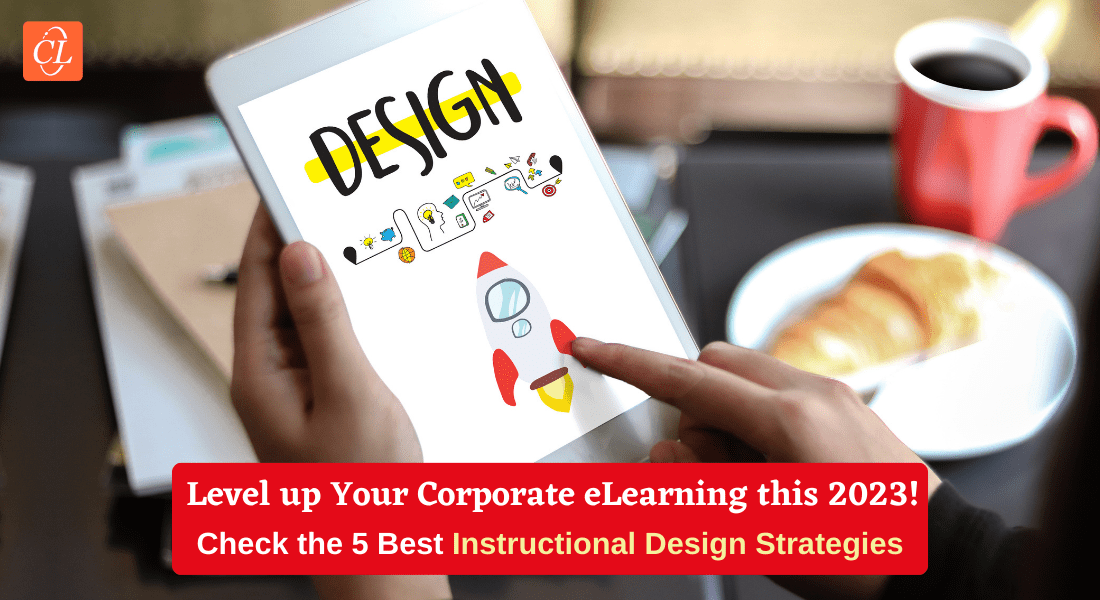The Power of ID Strategies to Design Courses for a Hybrid Workforce

The COVID-19 pandemic has drastically changed the corporate environment. Today, over 50% of companies wish to adopt the hybrid workspace model. That is a huge number, and it entails the need to study the changes in the way we train professionals.
With half the workforce working remotely, organizations need to switch to virtual learning methods. However, do you know that it takes solid instructional design strategies to develop an effective eLearning course?
Are you wondering how you can use instructional design to build strong eLearning courses for your hybrid workforce? Read on to find the eLearning design solution that works for you!
What Are the ID Strategies to Design Effective Courses For a Hybrid Workforce?
You mustn’t design ignore these elements while designing courses:
- Virtual instructor-led training (VILT)
- Gamification
- Video-based courses
- Microlearning
Do you want to find out more? Continue reading to discover the fine details of effective eLearning design!
What is a Hybrid Workforce?
A hybrid workforce is utilizing the best of both the online and offline worlds. With this model, companies use a combination of remote and in-office work models. A few companies might manage employees for both modes. However, your organization could make things flexible by allowing its employees to choose where they want to work from.
The point of the hybrid workforce is that it serves the needs of employees who are empowered to ensure their company meets its goals.
Vehicle hybrid workforces are the emerging trend in several corporations, yet it comes with its own sets of challenges. Managing employee training, for example, can be an enormous challenge. However, with the right instructional design strategies, you can find workable solutions!
Explore the Basics of Instructional Design to Make eLearning Courses That Stand Out!
Do You Need to Adopt a New Training Model for Your Hybrid Workforce?
Naturally! As there’s no way that hybrid workforces can work with a completely in-office model. You must plan for your hybrid workforce and create a course that is designed to help employees at home to stay alongside the ones in office.
This way, you uphold the uniformity of instruction and learners’ knowledge retention. And you help your hybrid workforce adapt to virtual learning media. With the right design and content, both remote and in-office employees get:
- Consistent training
- Meaningful interaction
- Knowledge at their own pace
To add value to a hybrid workforce, you must adopt new policies and tools to make sure your team learns easily.
Challenges of the Hybrid Work Model
There are several challenges that hamper the process of implementing a training strategy for a hybrid workforce. They are:
Coordination difficulties
To coordinate operations can be hard when one team is remote, and the other isn’t. Problems may arise when resolving doubts and in team discussions.
Cultural challenges
Naturally, when half the team is remote, especially for multinational companies, there might be cultural differences between employees in diverse geographies. Meeting them for training sessions online can pose a challenge.
Training Assessment
To gauge how well each learner absorbs knowledge is another hassle of the online mode. After all, there aren’t many ways to judge performance without using numbers, right?
The Dos of Designing Courses for the Hybrid Workforce
Now that you’re aware of the challenges of training a hybrid workforce, you should also know how to design courses for them.
Self-paced models
With time, cultural variations and differing levels of retention, each course of the hybrid workforce should cater for self-directed learning.
Work-integrated learning
Each course for the hybrid workforce should be work-integrated. They should fit their distinct roles and job-related tasks. Also, the training schedule mustn’t overburden employees or clash with their work hours.
Focus on Communication
You mustn’t negate the clear communication of courses for a hybrid workforce. The one important reason for this – everybody’s physically apart from each another. Without regulated communication, your company could forget about catering for the transparent communication of employees in the long run.
Collaborative Learning
Collaborative learning methods, such as discussion forums and team meetings, are important. They help build rapport between employees in office and those working remotely. It also increases the knowledge bank of the team.
Responsive Courses
Organizations must design responsive courses that are multi-device and multi-browser compatible to enable easy access of the hybrid workforce.
Instructional Design Strategies for the Hybrid Workforce
Sure, you might know what you should and shouldn’t do when creating courses for your hybrid workforce. However, do you know what makes those courses successful?
In this section, let’s look at four important instructional design strategies to help you design courses for the hybrid workforces.
VILT
Virtual Instructor-Led Training is a spectacular way of keeping employees engaged regardless of their location. Through VILT, companies get to mimic the age-old traditional classroom experience, only this time it’s online.
VILT allows each employee to be present on a single platform facing one instructor. This way, everyone gets to be on the same page at the same time. However, to make certain the course is self-regulated, you can record VILT sessions and view them later.
Game-based Courses
Game-based courses or gamification promotes engagement among employees while also helping you analyze their performance. Gamification of online courses allows learners to easily flow through the course while also assessing their learning to determine whether they’re paying attention.
Gamification also includes building competitive leaderboards for each employee to help compare their performances and add much needed fun to learning. Such gamified learning experiences are ideal for attracting today’s millennial-dominated workforce.
Video-based Courses
Through video-based courses, you can keep learners involved continuously. Videos are excellent at capturing the dwindling attention span of today’ corporate employees through its demonstrative delivery using graphics and a variety of visual elements.
Video-based courses allow learners to stay motivated and engaged in their learning. As a microlearning tool, they also produce better knowledge retention, because they’re much quicker to consume than large chunks of text.
Microlearning
Microlearning is another attractive instructional design strategy that helps your learners engage with their course, both in office and at home. Microlearning tools such as audios, videos, short scrolling pages and social media posts are ideal to enhance the learners’ focus.
What’s best about microlearning is it allows your learners to absorb knowledge quickly and comfortably. Also, if you add discussion forums into your courses, you can use microlearning tools as interesting icebreakers and on-the-go training aids.
It’s a Wrap!
Paying attention to your instructional design strategy is extremely important. You need to make sure they’re engaging and effective.
What’s best is that if you have analyzed your learners and what you need to grab their attention, then securing engaging instructional design strategies is not an unreachable goal. We wrote this blog with the aim of inspiring you to create highly interactive instructional design strategies for your hybrid workforce.
Do you want to find out more on the many ID tactics that you can use to create sticky online learning and guarantee unforgettable experiences for your learners? Here’s a webinar recording that helps you explore more on instructional design!



![What Training Managers Should Know about Instructional Design Strategies [Infographic]](https://blog.commlabindia.com/hubfs/Imported_Blog_Media/instructional-design-strategies-training-managers-info.jpg)

